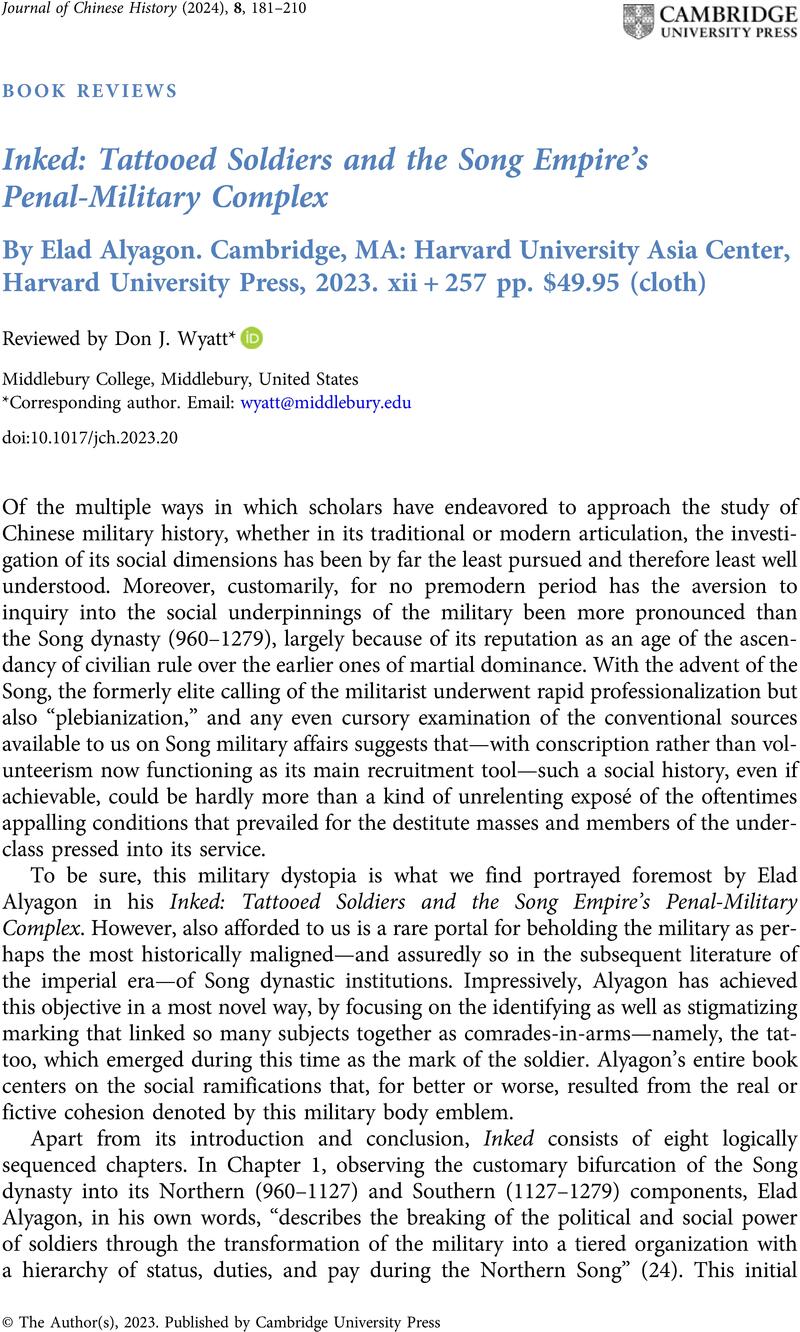No CrossRef data available.
Article contents
Inked: Tattooed Soldiers and the Song Empire's Penal-Military Complex By Elad Alyagon. Cambridge, MA: Harvard University Asia Center, Harvard University Press, 2023. xii + 257 pp. $49.95 (cloth)
Review products
Published online by Cambridge University Press: 12 October 2023
Abstract

- Type
- Book Review
- Information
- Copyright
- Copyright © The Author(s), 2023. Published by Cambridge University Press



